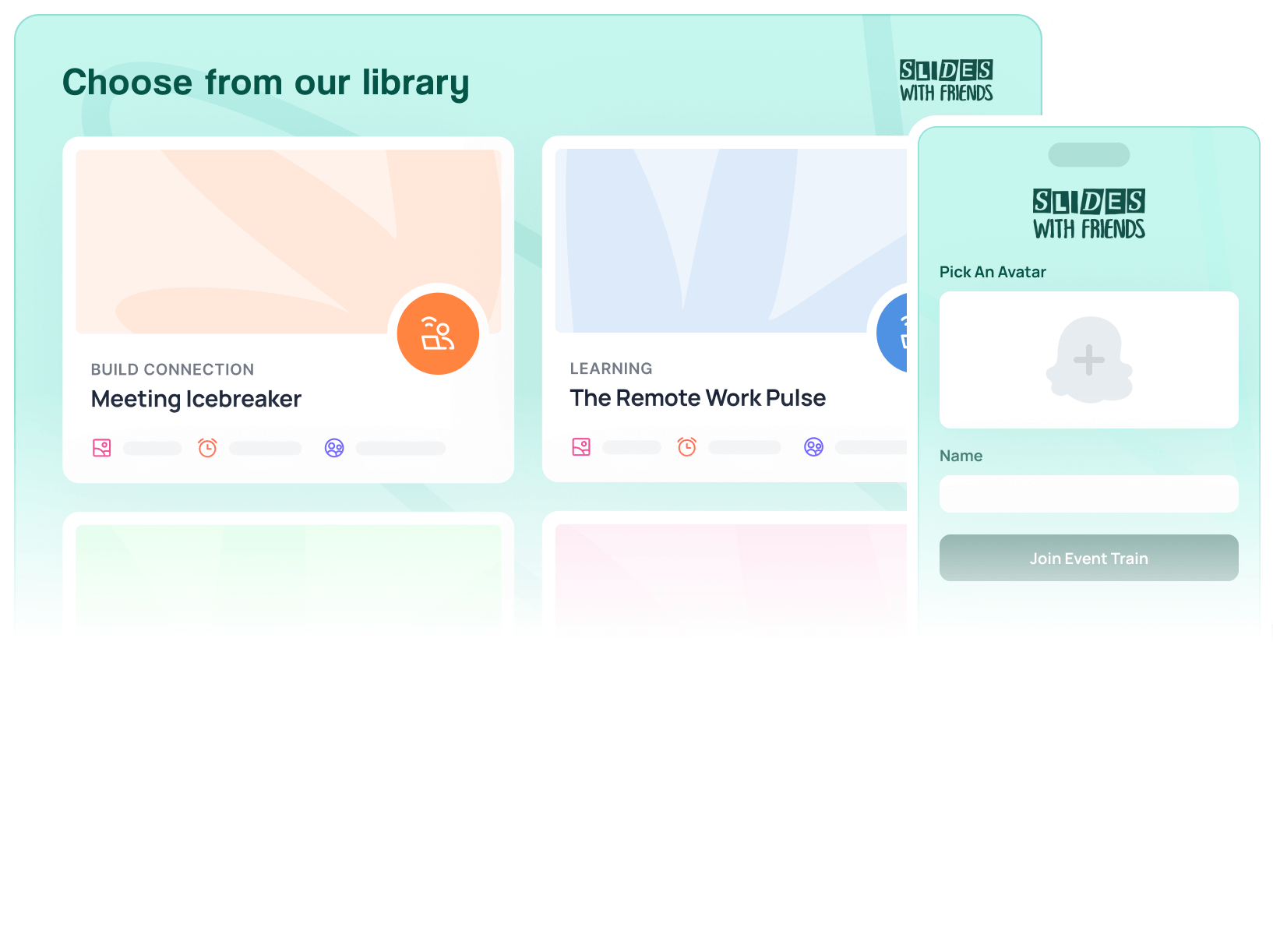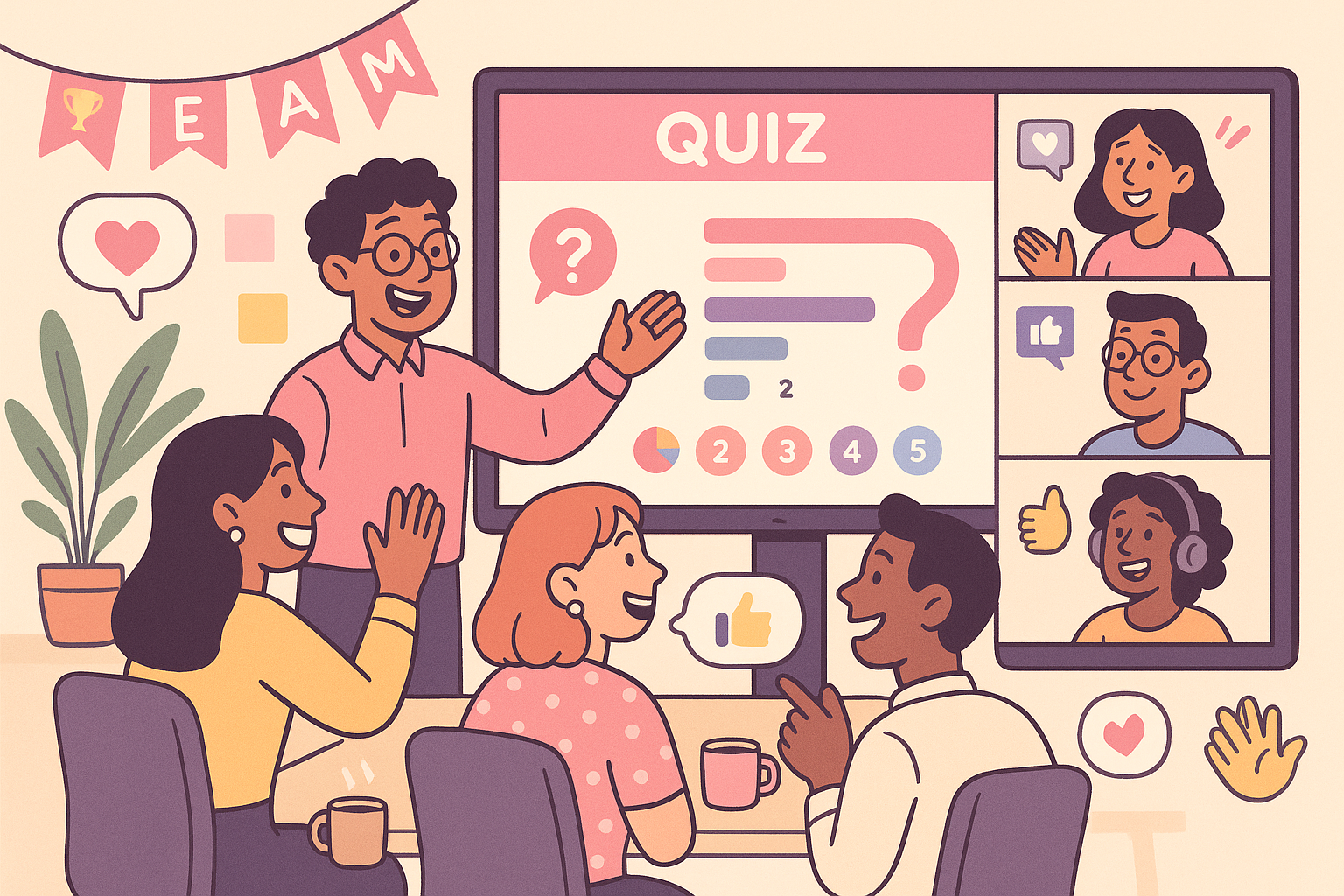The 6 Best Ways to Get Students Engaged in Online Learning
Whether you're a remote tutor, your class isn't all the way back in person yet, or you've moved all the way online officially — Zoom teaching is hard. Here are 6 excellent ways to make it easier on you, and more interesting for your students.

Online teaching is awesome — until it’s not. There’s nothing worse than logging on to lecture students while they scroll their phones (or turn off their cameras so you’re not even sure if they’re still there).
The best way to solve this dilemma is to boost engagement levels. But that’s easier said than done. And that’s why we’ve put in the research to find the best tips and tools to get students engaged in online learning. Simply read on to fill up on ideas, and then put your favorite tricks to the test. Last but not least — remember to let us know how it goes!
1. Use Interactive Tools
Lectures via Zoom alone are on the way out. Students need more interaction to keep their minds engaged in online learning. Using tools that let your class participate and interact in a seamless way is now starting to be the expectation, rather than the exception. Interaction is a proven way to keep learners involved, and can make a significant impact on the interest levels and participation you see in your class.
When you make interactive lessons for students using online tools that are built to enable student engagement, you'll see more participation than when you're just lecturing. Whether you're using Slides With Friends, Kahoot, Mentimeter, Gatheround, or one of the many others, this is an easy way to instantly make your lessons interactive, and therefore increase engagement.
Here's a whole blog with a list of great online tools you can use to create interactive lessons.

Once you've selected a tool to use — what do you do with it? Here are some interactive lesson frameworks that are well worth testing out. They all work remote and online, or in-person on a projector. You can use tech tools to make them easy, or DIY them!
Interactive Lesson Framework Ideas
- Live Quizzing: Make pop quizzes and light exams a little more fun (and a little less groan-inducing) by making them live, interactive, and a whole-group activity. You can use testing tools that let you ask multiple choice, type-in-specific-text answers, and "which response is best? - vote" type questions to your students. It will determine correct and incorrect answers, and automatically tally grades and scores for you. You can download the results as a CSV, or show live leaderboards to get some friendly competition spirit into the class!
- Live Word Clouds: Give students a prompt and display their responses in a cool, virtual word cloud. When they vote for specific phrases, those words grow in size. You might want to ask them to vote for the most fitting answer, their favorite name for a new class pet, etc.
- Show and Tell: Let kids share images and home items with the group. You can have them just unmute, hold up items, and talk about them — or use tools that are made for this. For instance having students share photos with the class using an interactive photo sharing tool. This allows students to add photos from their smartphone gallery, and displays them one by one to the class as you advance your slide deck presentation. Maybe it’s the last fun thing they did with their family, or maybe they’re sharing a screenshot of research they did. Whatever it is, you'll get them interested in talking in no time.
- Apples to Apples style voting: Let students share an answer to a question and then vote on which response from other students they like best. If you've ever played Apples to Apples with your students (or Cards Against Humanity with your friends), you'll know how engaging this game format is. You can make it educational and socratic so easily! All you have to do is create the prompts yourself, and let your students write or create their own answers. If you don't want to print out a ton of your own cards, you can use tools that do the work for you. For instance you can use the SlidesWith "User Vote" slide in any deck to play this Apples to Apples format of interactive game. This lets students send in a response to your prompt, displays all the responses to the group (but not who-said what) then it lets the kids vote on oneanswer they like best (but not their own!). Some good prompt questions might be: what would be the worst bag lunch, what's the best real-world example of the Pythagorean theorem, orif they could create new class job positions, like note taker and attendance keeper, what would they be, etc. If you want lots of great prompt questions, check out our "Best Icebreaker Questions"blog for older students.
Slides With Friends could also serve as a fun virtual coffee break between other faculty members (especially after all the hard work you’re putting in to boost student engagement).
2. Foster Connection using Personalization
A professor named Khasadyahu Zarbabal, Ph.D., (Dr. Z), shared an intriguing take on virtual learning engagement levels in a recent Forbes interview. He explained that prior to the shift to online learning, the classroom was for personal connection and homework was for hard work. When the in-person sessions were cut, so was the connection he made with his students.
Dr. Z recommends placing a priority on connection in the virtual classroom. Some ways to accomplish this include:
- Taking time to check in with students 1-3 times each week.
- Bringing up personal stories throughout your lecture.
- Following up on events in students’ lives. Did John win the basketball game he was prepping for last week? How is Anna adjusting to life with her family’s new puppy?
- Listening closely when students bring up concerns — and pointing them toward school or university resources when applicable.
- Leaving a few minutes of each class session for ice breakers (grab a list of 60+ virtual ice-breaking questions!), community builders, and more (similar to the use of interactive tools we mentioned above).
3. Bring In the Experts
Personalization isn’t the only easy way to boost engagement in online courses. It can also help to bring in faculty members, or other professionals, to shine a new light on a topic you’ve been teaching. If you’re learning about math, consider bringing in a construction worker to share how they use algebra and geometry on the job site every day. If you’re covering history, invite a museum staff member who is filled with stories that bring past decades to life.
This can also be done in place of other assignments that don’t seem to be making an impact, like discussion posts:
“Online discussion forums haven’t worked for my students, it was just an extra to-do. Today’s students are juggling multiple responsibilities. They want to focus on the material, and in a certain way, on practice more so than theory. So I brought in people from Wall Street, non-profit leaders, and those in marketing, to give a different perspective to help students show different paths to finance.”
-Khasadyahu Zarbabal, Ph.D., “Want to Improve Student Engagement? Involve Faculty in New Ways.”
This approach also works with personal stories, so feel free to bring up professional experiences of your own! Your students will likely show higher engagement levels while building a deeper connection to you as their teacher, too.

4. Take Virtual Field Trips
Remember the fascination that came from pre-field trip unit studies in the days of in-person learning? The motivation doesn’t have to be forgotten — it can be forged with implementation of virtual field trips.
Say you’re studying entomology for the next four weeks. At the end of the unit, take a virtual trip to a science museum with a unit all about bugs and watch your students’ learning come to life. Talk about the field trip, and what learners will need to know when they take an online tour of the exhibit, to keep engagement and motivation high well before the trip takes place.
Some of the best virtual field trip apps and websites include:
- Apollo 11 VR
- Google Earth VR
- Detour — Immersive Audio Walking Tours
- Listenwise
- NPR: Borderland
- Your own local museum or tourist attraction!
5. Measure Real-Time Engagement
You want more engagement, but are you aware of the specific metrics taking place in your virtual classroom right now? There are tools designed exactly for this! There are many options you can use to get real time feedback, measure engagement in the moment, and do live polling of your student body.
Here's a list of software and online platforms designed for teachers to measure (and thereby help you understand how to increase) student engagement:
Slides With Friends
Slides With Friends is an interactive live polling tool that can give you instant insight into how your class is feeling. You can build presentations and your students join in on their phones, sending in answers to multiple choice quiz questions, sharing feedback, and live interacting with your lesson.

For example, use this pre-made "take the classroom temperature" deck to instantly let your students join your presentation and send in responses and answers to check-in questions. This gives you a great insight into their actual engagement (and you can see results happen in real time).
Echo360
Echo360 is a comprehensive participation platform that can help you measure this, as well as serve as a streaming and recording platform. It's super powerful (but also super pricey, so if you're looking for a more low-investment tool, try SlidesWith or the other options in the list).

Google Classroom
Google Classroom is a favorite of lots of teachers for good reason. It's not too pricey and has lots of well thought-out features.

Thinkific
Thinkific is great for online teachers and tutors trying to build and monetize their lessons. Create lessons through their templates and offer them for sale or for free.

And if you’re looking for free ways to measure and track engagement, try live polls, knowledge checks, and discussion logs!
6. Implement Project-Based Learning
Today’s students aren’t interested in memorizing formulas or solving fictional word problems — especially in the online classroom. Students want to boost knowledge and strengthen skills that will make a measurable difference in their futures.
Project-based learning is a tactic that involves students in “real-world and personally meaningful projects.” PBL includes lessons that challenge and excite students, and that require them to work both online and in-person to accomplish a difference-making result.
How can you add PBL to your online classroom and improve student engagement? Try:
- Letting students build a “business” with a partner, and selling the product they create via an online marketplace like Etsy.
- Empowering a learner to follow their interests by studying veterinary science and shadowing a local vet for a day (or video-chatting with a vet online).
- Asking students to plant seeds at home to experience germination firsthand.
You may also want to give a project-based learning platform a try for added convenience and easier collaboration. Project Pals is an excellent choice as it provides the ability to track projects, assess completed work, and showcase results to the entire class.
Get engaging!
While boosting engagement in online courses can be tricky, it’s far from impossible. With a bit of creativity and support from virtual tools, you can have every learner interested in what you have to say. Remember to make connections, support interaction among classmates and the content, and involve students in work that will make a difference in their lives. Implement these tips and watch participation grow.
We know you can do it, so log on and make your engagement-level dreams come true.


Ready to ditch the dull, and run team sessions that people will actually enjoy?
Get started with a Slides with Friends deck in no time. We’ve got all the interactive features you need in one easy-to-learn, easy-to-set-up tool.















